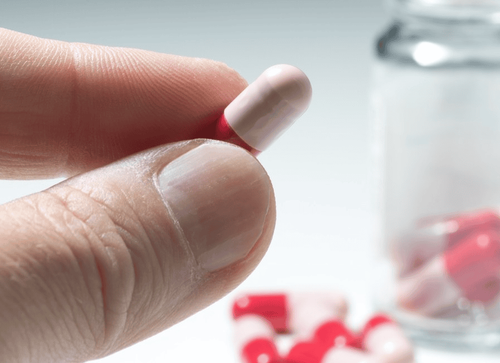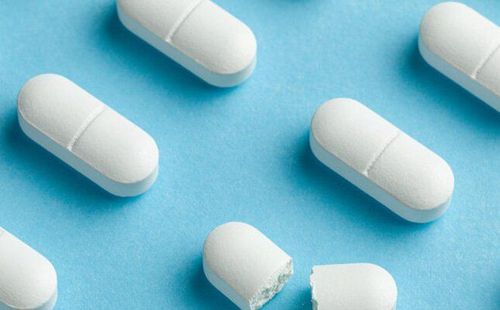This is an automatically translated article.
Low calcium can lead to osteoporosis affecting the patient's bone and joint function. The prevention and treatment of the condition can rely on drugs to supplement the necessary amount of calcium and vitamins and Caldihasan is one of them. So what is Caldihasan?
1. What is Caldihasan? Uses of Caldihasan
Caldihasan drug with the original name is calcium carbonate and cholecalciferol (vitamin D3) belongs to the subgroup of calcium in combination with vitamins. Caldihasan is effective in the prevention and treatment of hypocalcemia in people who do not get enough calcium from the diet. Because calcium deficiency can lead to osteoporosis in adults and rickets in children. In addition, Caldihasan is also used to supplement vitamin D and calcium daily during the growth period, menopausal women, pregnant and lactating women or those with a calcium-deficient diet.
In addition, the use of Caldihasan may not be listed on the approved drug label, but in some cases, the doctor may prescribe the use of Caldihasan. Therefore, before taking the medicine, consult your doctor.
2. How to use Caldihasan
Caldihasan is made in the form of film-coated tablets. Dosage will be based on age and daily calcium needs. The usual dose is 1-2 pills per day. In women who are pregnant or breastfeeding, do not take more than 400 international units of vitamin D per day (about 3 tablets per day). For children take 1-2 tablets/day.
Patients can take the drug with or without food, before or after eating. However, to reduce stomach irritation you can take it with food and need to take the tablet whole with a full glass of water, do not chew or break the tablet.
The use of Caldihasan is only effective when the patient does not abuse the drug for too long for a long time. This does not make the patient's condition better, but also increases the risk of unwanted effects.
3. Undesirable effects when using the drug Caldihasan
Caldihasan can cause some unwanted and common side effects that can be mentioned as:
Digestive irritation Constipation Loss of appetite Stomach upset Bloating Increased blood calcium levels Dry mouth Headache Before When prescribing drugs, doctors always consider the benefits and effectiveness of Caldihasan. When using Caldihasan, there may still be unwanted effects, then the patient should immediately notify the doctor, nurse for immediate medical intervention.
4. Some notes when using the drug Caldihasan
Some notes when using Caldihasan include:
Allergy notice to Caldihasan hypersensitivity reaction to any other allergy. Caldihasan may contain ingredients that don't work and could cause an allergic reaction or other serious problems. Report any medications you are taking including prescription and nonprescription drugs, herbs and supplements, foods, dyes or preservatives. Caldihasan is contraindicated in patients with concomitant hypercalcaemia such as hyperparathyroidism, osteolytic malignancies, vitamin D overdose, severe hypercalciuria, severe renal failure, immobility-induced osteoporosis, being treated with vitamin D, kidney stones, urolithiasis. Caldihasan should be used with caution in patients with a history of kidney stones, heart disease, or kidney disease. Caldihasan should not be used concurrently with other tonic preparations containing vitamin D and calcium. Calcium levels should be monitored. in the blood and water of patients with renal failure or a history of kidney stones or taking vitamin D if on long-term treatment. There are not enough studies to determine the risks of using Caldihasan in pregnant and breast-feeding women. If you forget to take a dose of Caldihasan, take it as soon as possible. However, if it is close to the time of your next dose, skip the missed dose and continue taking or injecting the medicine as scheduled. Do not use more drug than prescribed treatment. Caldihasan overdose or ingestion can cause serious symptoms such as nausea, vomiting, abdominal pain, shortness of breath, fainting,...
5. Drug interactions
Some drugs that can interact with Caldihasan include:
Digoxin Tetracycline antibiotics such as minocycline, doxycycline Bisphosphonate group such as alendronate Levothyroxine Estramustine Quinolone antibiotics such as levofloxacin, ciprofloxacin Cholestyramine or colestipol Drugs that inhibit calcium excretion through such as clopamide, thiazides, chlorthalidone, ciprofloxacin, anticonvulsants. Diet with oxalates and phytates
6. How to store Caldihasan
Store Caldihasan in tablet form at room temperature below 30 degrees Celsius, protected from light and away from moisture. When the medicine has expired or is damaged and cannot be used anymore, dispose of it and dispose of it properly. Do not arbitrarily dispose of Caldihasan into an environment such as a water pipe or toilet unless requested to do so.
Please dial HOTLINE for more information or register for an appointment HERE. Download MyVinmec app to make appointments faster and to manage your bookings easily.













